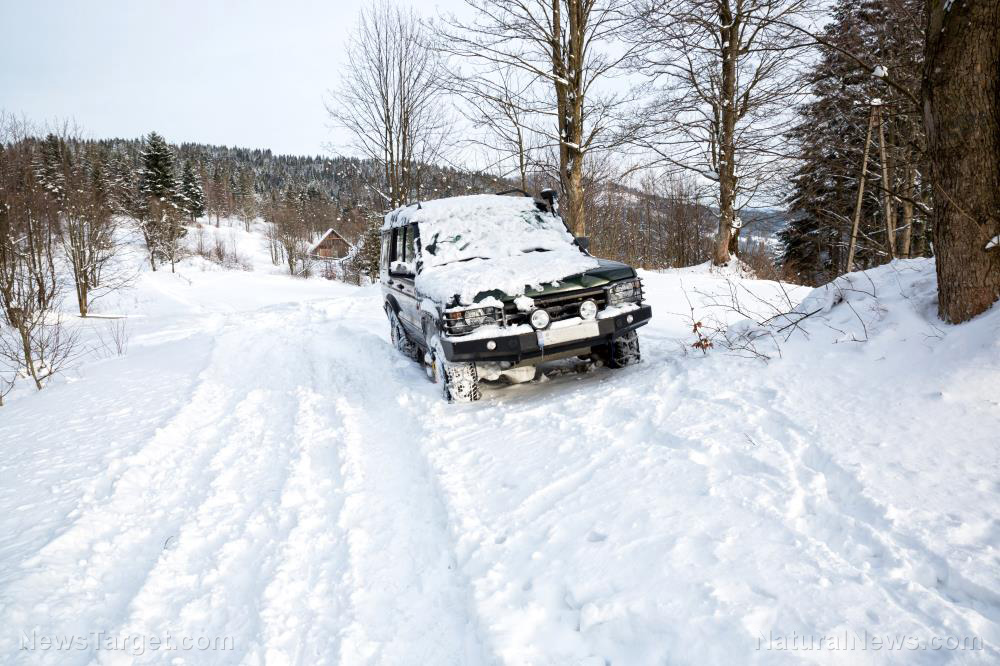Explosive eruptions by Caribbean volcano ravage island and fling climate-cooling aerosols into the atmosphere
04/23/2021 / By Virgilio Marin

La Soufriere, an active volcano in the Caribbean, has been ravaging the island of St.Vincent and flinging sulfate aerosols into the atmosphere through a series of explosive eruptions that started April 9. Communities residing near the volcano have been evacuated as fast-moving pyroclastic flows and volcanic ash engulf the island.
Authorities are currently monitoring the highly active volcano for more eruptions. Continued venting could potentially impact the climate, lowering global temperatures due to the release of sulfate aerosols.
Continued volcanic eruptions may cool the climate
La Soufriere, which sits on the northern end of St. Vincent island, in St. Vincent and the Grenadines, started rumbling last December. A lava dome formed over its mouth and continued to grow over the following months. The volcano finally erupted on April 9, setting off a series of explosive eruptions and ending more than four decades of inactivity.
Superheated, high-density volcanic material raced across the island in destructive, landslide-like events called pyroclastic flows. The eruptions also propelled massive plumes of volcanic ash and gas into the atmosphere, covering much of the island in ash.
The National Aeronautics and Space Administration (NASA) detected plumes at altitudes of up to 12 miles. Verity Flower, a volcanologist at NASA’s Goddard Space Flight Center, said that the eruptions led to a sustained injection of sulfate aerosol and ash into the stratosphere.
She and other scientists were closely monitoring for volcanic emissions creeping into the stratosphere. They were concerned because particles would last much longer and travel much farther throughout the atmosphere than if they were to stay in the troposphere. If the plumes were to linger, they could start to exert a cooling effect, lowering global temperatures.
Simon Carn, a volcanologist from Michigan Technological University, pointed out that the volcano would have to inject at least five teragrams of sulfur dioxide (a precursor of sulfate aerosol particles) into the stratosphere before it could exert any measurable impact on the climate.
After erupting for a week, satellite measurements showed that La Soufriere had delivered around 0.4 to 0.6 teragrams of sulfur dioxide to the upper atmosphere. That was more than any other Caribbean volcano had produced during the satellite era, and it could increase even more if the volcano were to keep erupting. (Related: A volcanic eruption in 1815 blocked the sun for a full year, causing global crop failures and famine… and it could happen again.)
NASA climatologist Ralph Kahn noted that the intensity of the eruption is something that should be watched out for. “Moderate eruptions are also far more numerous than the really huge ones, so the cumulative effects of such eruptions can be significant over time,” Kahn explained.
In a Twitter post on April 14, the University of the West Indies Seismic Researcher Centre warned that explosive eruptions and ashfall would continue over the next few days. It also reported multiple small, long-period earthquakes and mudflows in some areas.
Eruptions disrupt island’s power, water and food supply
Around 20,000 out of the island’s 110,000 inhabitants were forced to evacuate the northern end of St. Vincent. Some of the evacuees were staying in shelters put up by the government, while others had to stay with family and relatives living within the safe zones because the shelters could not accommodate all of them.
Residents living in other parts of the island were also affected, as the eruptions took out the electricity and restricted access to potable water. Ayanna Bobb, a teacher and resident of northern St. Vincent, told AccuWeather that the island had limited water supply because ash contaminated the rivers where residents get their water. She said that springs on the islands of the Grenadines provided relief but this was very limited because people were coming in droves.
“We’re in a sad state. We don’t have any water currently,” Bobb said. “We’ve been out of water for the last four days and we recently just got the electricity back.” (Related: How prepared are you for a volcanic eruption?.)
The sheer amount of dust that the volcano unleashed is also causing health issues for residents, the St. Vincent teacher added. “We’re not equipped with the masks for this,” she shared. “We have masks because of the COVID-19 pandemic that went on, but the dust is a whole different level. We need a specific gear.”
Sam Bloch, a humanitarian volunteer working with nonprofit World Central Kitchen, feared the eruptions’ long-term effects on the island’s economy. He said that St. Vincent produces most of its food through agriculture, which the recent disaster disrupted.
“Hopefully, the agriculture comes back quickly enough and it doesn’t become a country that suddenly becomes dependent on importing,” Bloch said. “Because it did create a lot of its own food.”
Disaster.news has more on volcanic eruptions and other natural catastrophes.
Sources include:
Tagged Under: Caribbean volcano, Climate, climate change, Cooling effect, disasters, Earthquakes, electricity, environ, environment, explosive eruptions, food supply, La Soufriere, lava dome, mudflows, power supply, pyroclastic flows, St. Vincent island, stratosphere, sulfate aerosols, volcanic ash, volcanic eruptions, volcanic plumes, volcanoes, water supply, weather
RECENT NEWS & ARTICLES
COPYRIGHT © 2017 ENVIRON NEWS





















